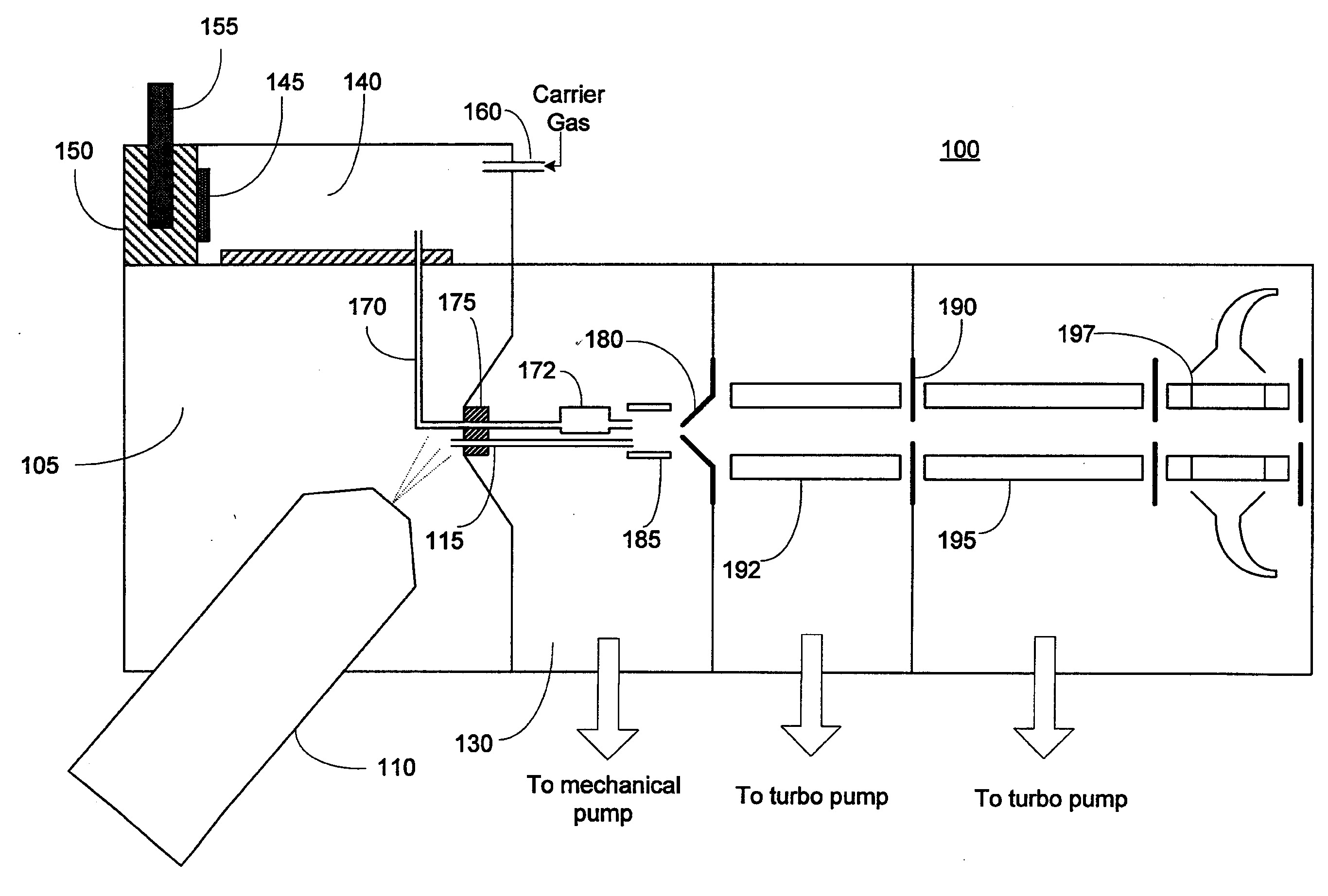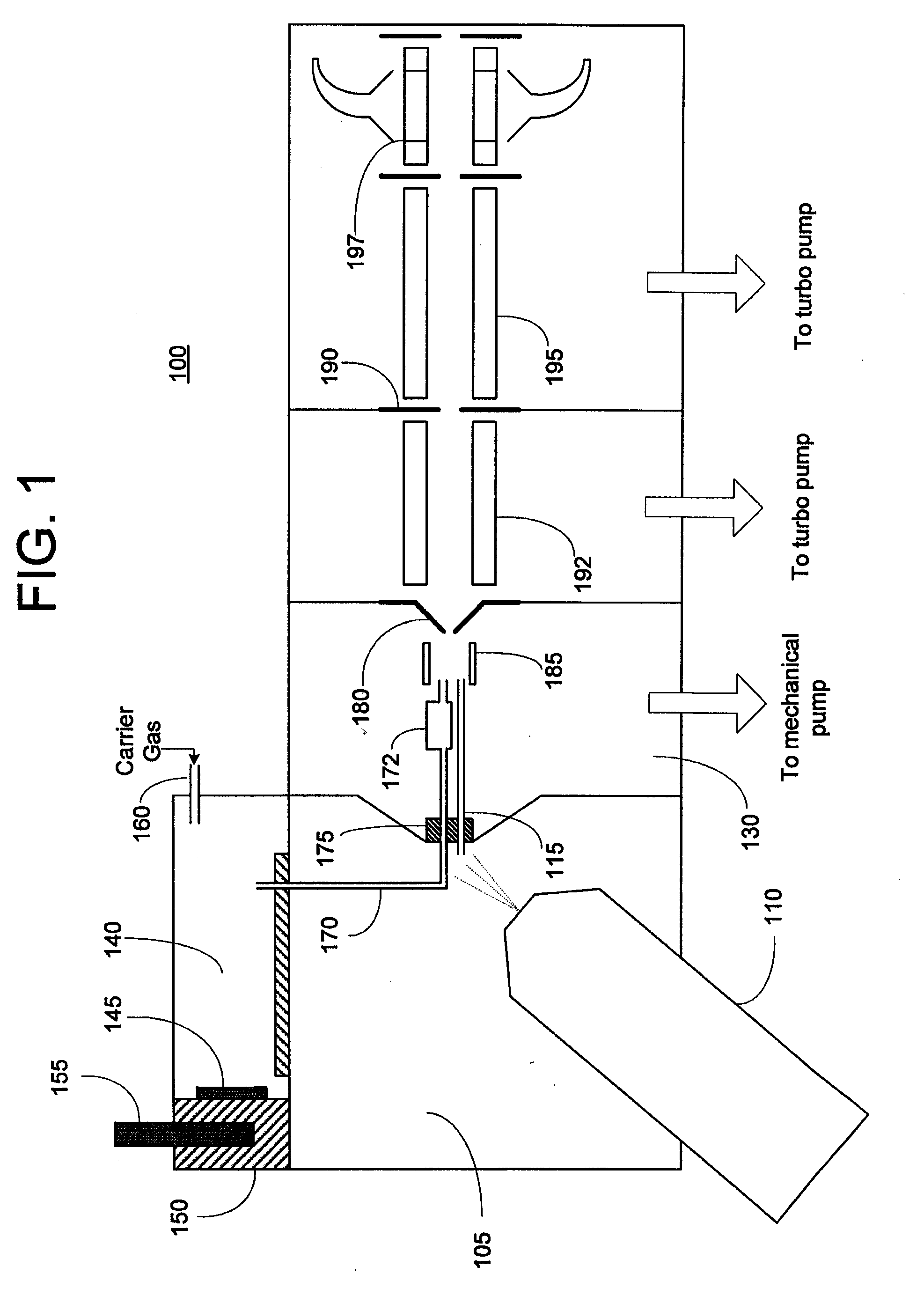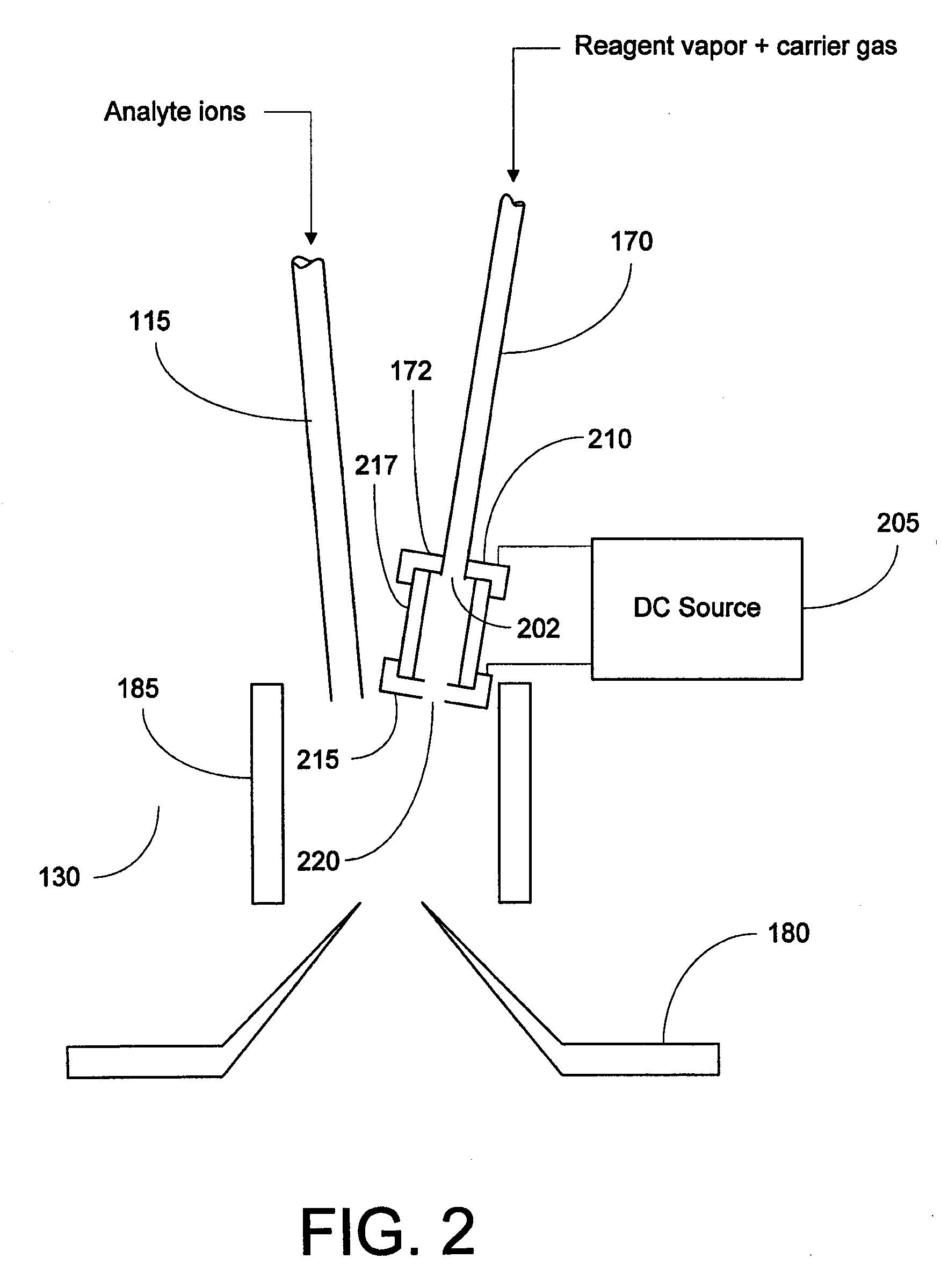Method and Apparatus for Generation of Reagent Ions in a Mass Spectrometer
a mass spectrometer and reagent ion technology, applied in the direction of instruments, particle separator tube details, separation processes, etc., can solve the problems of increasing the number of operational and design problems, the ci source filament may fail in an unpredictable manner, and the need for frequent replacemen
- Summary
- Abstract
- Description
- Claims
- Application Information
AI Technical Summary
Benefits of technology
Problems solved by technology
Method used
Image
Examples
Embodiment Construction
[0017]FIG. 1 schematically depicts a mass spectrometer 100 incorporating a front-end reagent ion source constructed according to an embodiment of the present invention. As used herein, the term “front-end” denotes that the ion source is configured to introduce reagent ions into a region located upstream in the analyte ion path relative to components of mass spectrometer 100 disposed in lower-pressure chambers (e.g., a mass analyzer), such that the analyte ions and reagent ions traverse a common path. Analyte ions (typically multiply-charged cations) are formed by electrospraying a sample solution into an analyte ionization chamber 105 via an electrospray probe 110. Analyte ionization chamber 105 will generally be maintained at or near atmospheric pressure. The analyte ions, together with background gas and partially desolvated droplets, flow into the inlet end of a conventional ion transfer tube 115 (which may take the form of a narrow-bore capillary tube) and traverse the length of...
PUM
 Login to View More
Login to View More Abstract
Description
Claims
Application Information
 Login to View More
Login to View More - R&D
- Intellectual Property
- Life Sciences
- Materials
- Tech Scout
- Unparalleled Data Quality
- Higher Quality Content
- 60% Fewer Hallucinations
Browse by: Latest US Patents, China's latest patents, Technical Efficacy Thesaurus, Application Domain, Technology Topic, Popular Technical Reports.
© 2025 PatSnap. All rights reserved.Legal|Privacy policy|Modern Slavery Act Transparency Statement|Sitemap|About US| Contact US: help@patsnap.com



